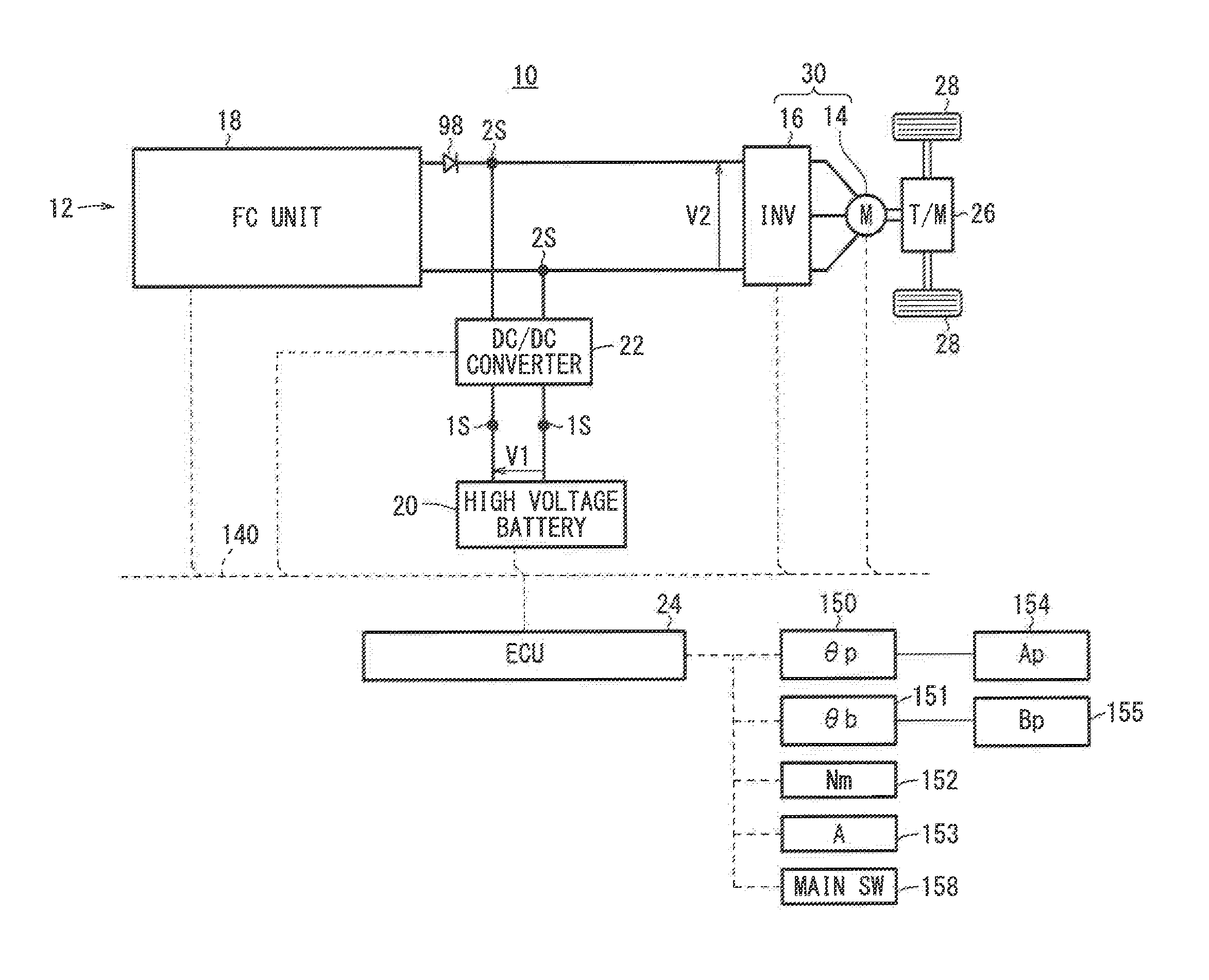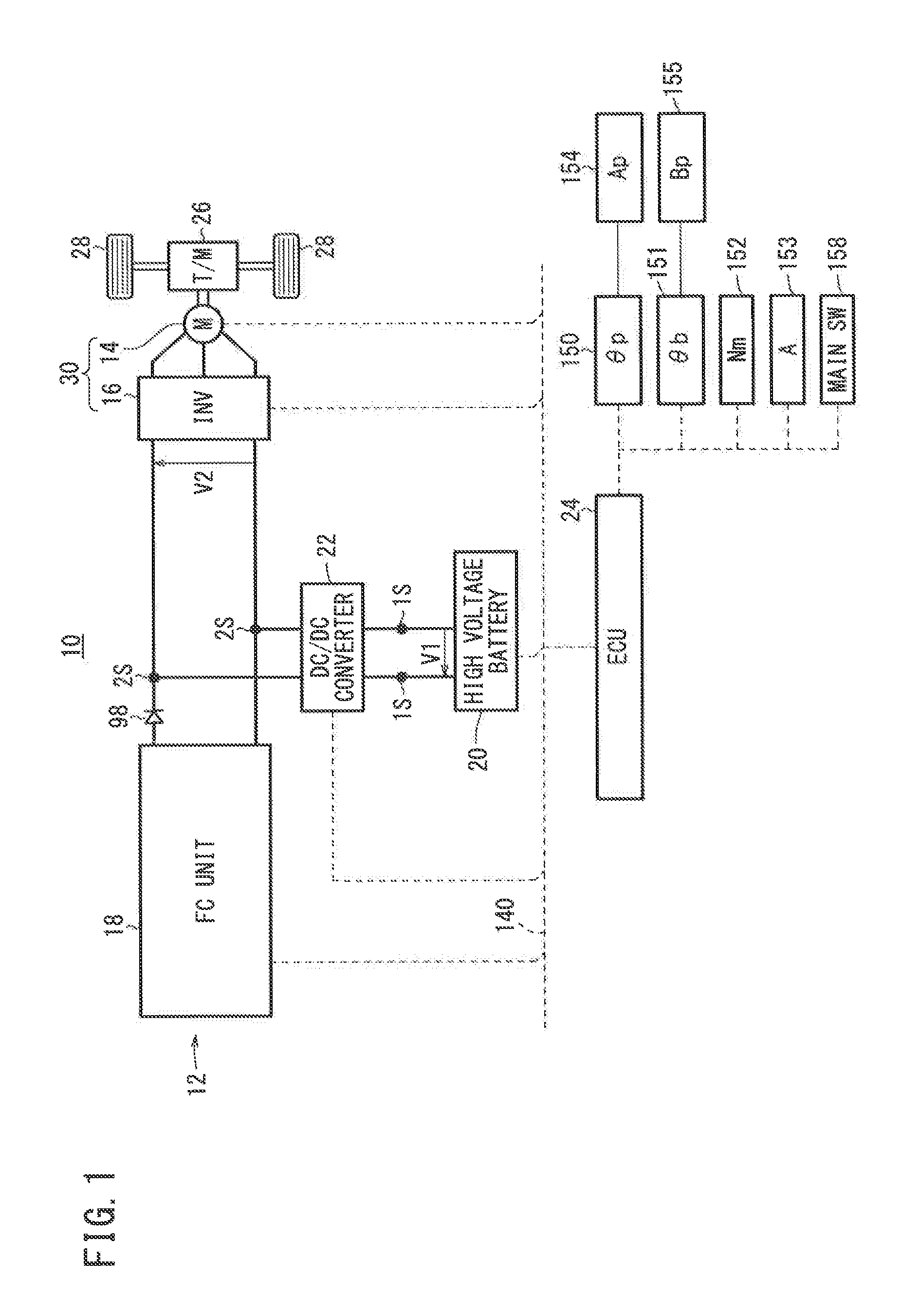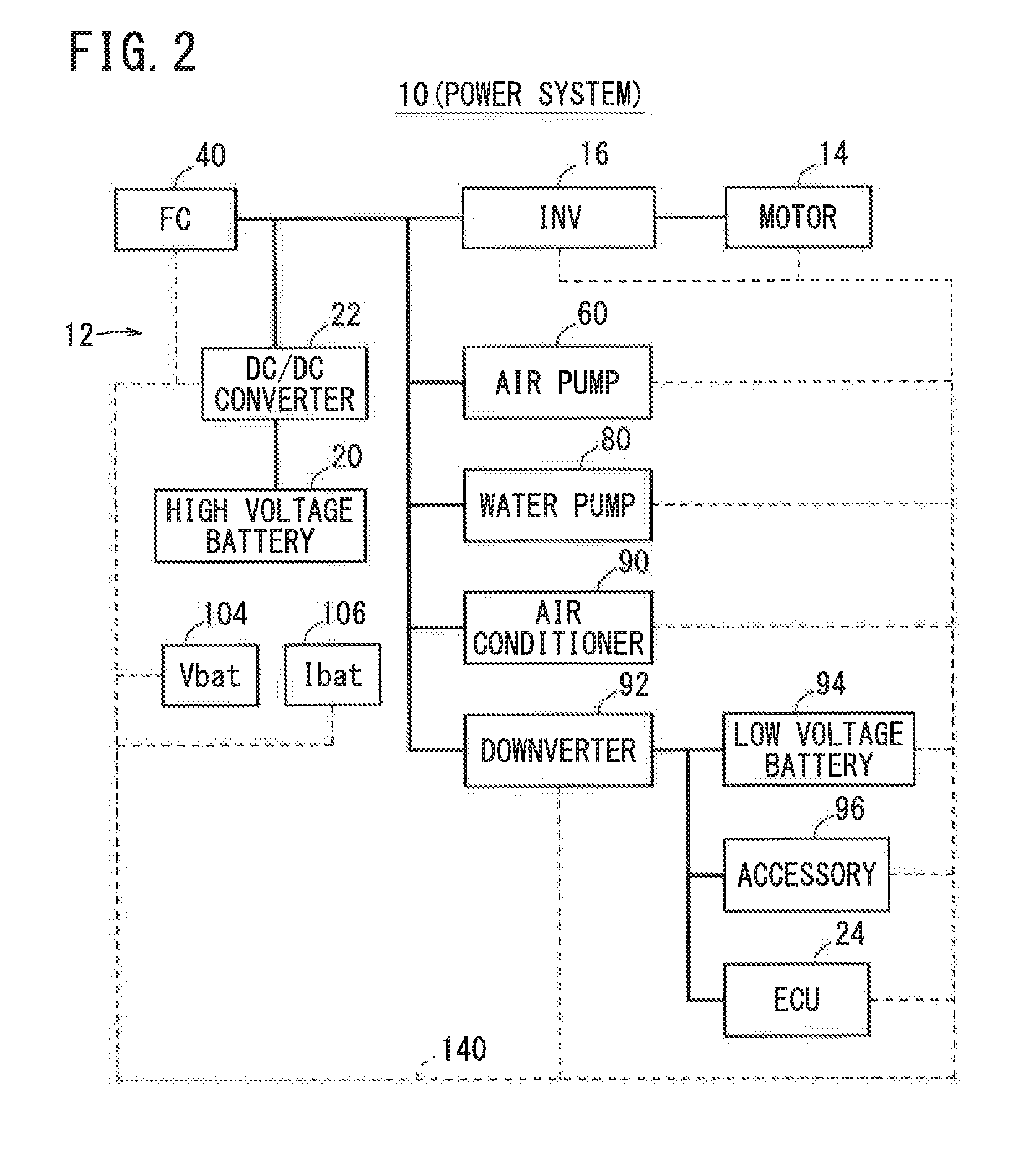Method of controlling fuel cell system
- Summary
- Abstract
- Description
- Claims
- Application Information
AI Technical Summary
Benefits of technology
Problems solved by technology
Method used
Image
Examples
Embodiment Construction
1. Description Regarding Overall Structure
[1-1. Overall Structure]
[0044]FIG. 1 is a diagram schematically showing the overall structure of a fuel cell vehicle (moving body) 10 (hereinafter referred to as the “FC vehicle 10” or “vehicle 10”) equipped with a fuel cell system 12 (hereinafter referred to as the “FC system 12”) according to an embodiment of the present invention. FIG. 2 is a block diagram showing a power system of the FC vehicle 10. As shown in FIGS. 1 and 2, the FC vehicle 10 includes a traction motor 14 and an inverter (auxiliary device) 16 in addition to the FC system 12.
[0045]The FC system 12 includes a fuel cell unit 18 (hereinafter referred to as the “FC unit 18”), a high voltage battery (hereinafter referred to as the “battery 20”) (energy storage device), a DC / DC converter 22, and an electronic control unit (control device) 24 (hereinafter referred to as the “ECU 24”).
[1-2. Drive System]
[0046]The motor 14 generates a driving force based on the electric power supp...
PUM
 Login to View More
Login to View More Abstract
Description
Claims
Application Information
 Login to View More
Login to View More - R&D
- Intellectual Property
- Life Sciences
- Materials
- Tech Scout
- Unparalleled Data Quality
- Higher Quality Content
- 60% Fewer Hallucinations
Browse by: Latest US Patents, China's latest patents, Technical Efficacy Thesaurus, Application Domain, Technology Topic, Popular Technical Reports.
© 2025 PatSnap. All rights reserved.Legal|Privacy policy|Modern Slavery Act Transparency Statement|Sitemap|About US| Contact US: help@patsnap.com



